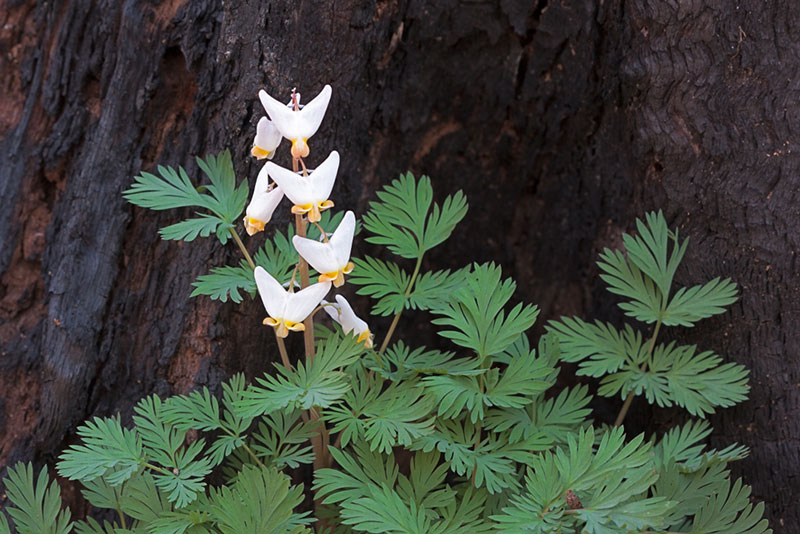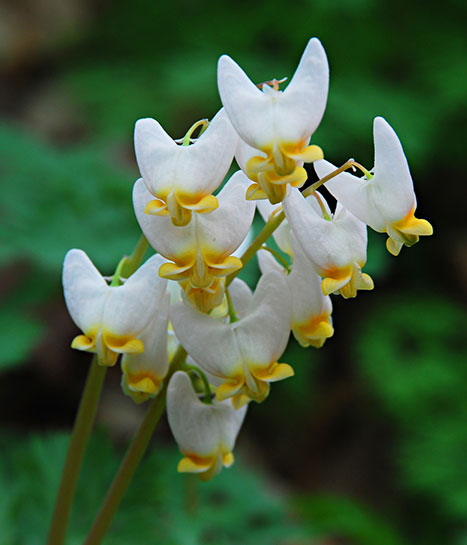
The Dutchman’s Breeches is a wildflower that gets its name from the look of the flowers. They are white in color and look like pants hanging from a clothesline in the 16th or 17th century.
They are also great for attracting bumblebees to your garden, which makes it a great wildflower to grow.
It can be found in zones three to eight, and they are not very picky when it comes to needs, which means that caring for them is nearly effortless.
In this guide, we are going to take a look at what the Dutchman’s Breeches need to grow and discuss other growing concerns that you will want to know about.
Light and Temperature Requirements
Since this is a plant that typically grows in the wild, it does not need a lot of sunlight. In fact, it is known to grow in forests where large trees often block the light, which makes it an ideal plant to grow in a shady area. When it comes to temperature, it’s not picky either, unless the seeds are germinating, then the soil needs to be kept at about 65 degrees Fahrenheit.
Watering Requirements
This plant also requires an average amount of water to grow. Typically, you can allow the ground to dry slightly before watering it again, but in the growing season, you don’t want the ground to get dry at all so that you get full blooms when they appear.
Soil and Fertilizer Requirements
As I stated earlier, growing them under a tree is ideal because this plant loves to grow in leaf litter. Otherwise, there is no particular type of soil that you will want to use for this plant. However, you will need soil that is well-draining so that the roots do not lie in water. Make sure the soil stays somewhat moist, which is why this plant will do well in a shady rock garden.
Add some compost to your soil to naturally provide the plant with the nutrients that it needs. Additional fertilizer is not required, but if you decide to use one, select a gentle variety that has an even amount of nutrients for the plant.

How to Divide It
As your plant grows, you will find that a few years of growth will have it looking wild and too large for a single plant, so it’s time to divide it. In the summer, before the plant begins to die back, make sure that you mark the plant’s outline so that you know where to dig for corms during the fall. When fall arrives, carefully dig up the corms, and break off the attached bulblets. These bulblets need to be planted about an inch below the surface of the soil, 6 inches apart. The next year, you should see a plant with leaves, but it will not bloom for three to four years after that point.
Growing from a Seed
When you grow Dutchman’s Breeches from seed, you will need to make sure that it is planted during the winter because it needs cold air to germinate properly. The plant will take hold outdoors with very little care because they have adapted to do so as a wildflower, but they can still be grown indoors if you prefer. With that being said, you will need to create the same cold weather effect indoors so that the seeds can germinate. The soil needs to be kept moist in a container. The container needs to be sealed inside a plastic bag and left in your freezer for about six weeks.
Once the six weeks have passed, the container can be placed in a location that gets very little sunlight to germinate. Keep the soil moist during this time, and after the last frost of the year, transplant it outside so that the plant can begin to grow.
Pests, Diseases, and Problems
This is a plant that does not have a lot of pests or diseases to contend with as it grows. With that being said, one thing that you will need to take note of if you plan to grow this plant is the fact that it is poisonous. The plant contains alkaloids that can cause issues with your brain or heart if ingested. In addition, the plant can irritate your skin, so don’t handle it without wearing gloves. Because of the plant’s poisonous nature, rabbit and deer tend to stay away from it.




